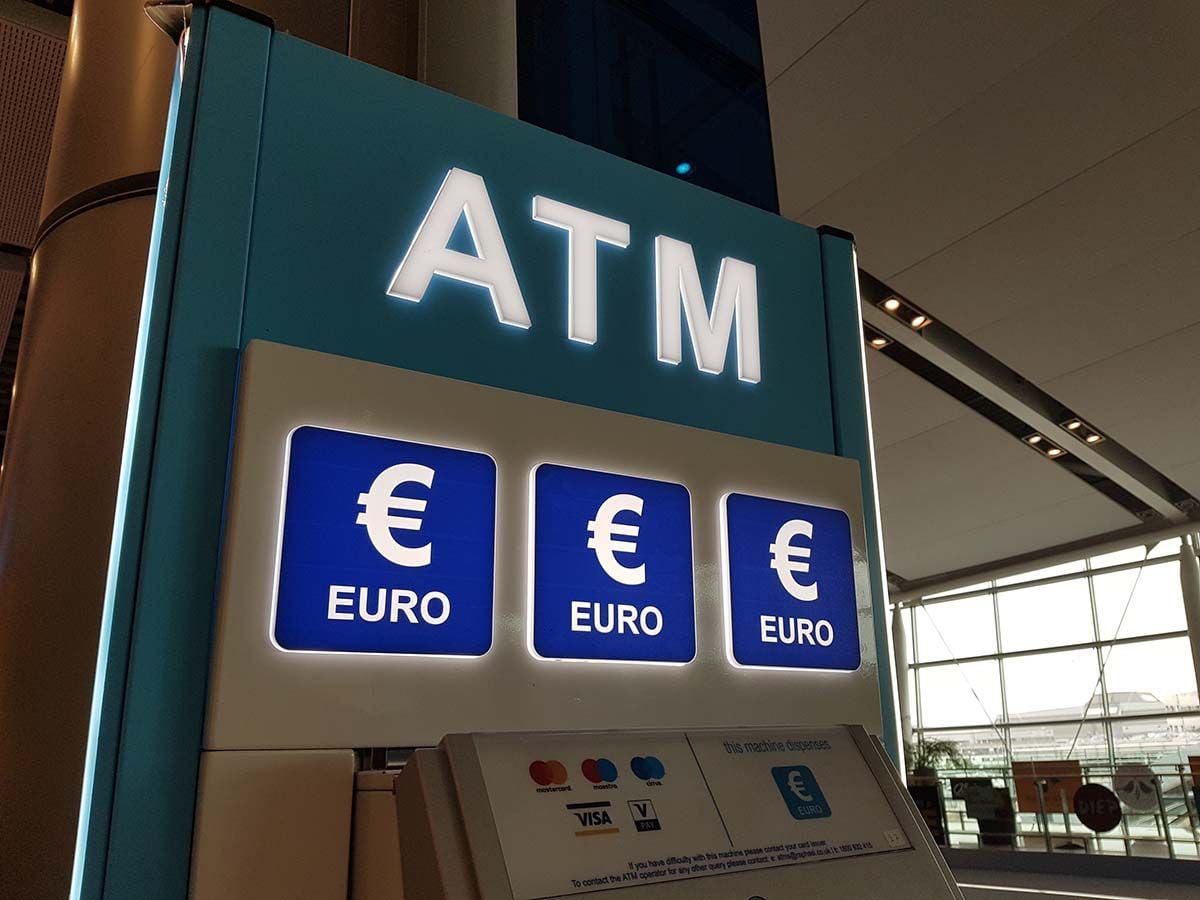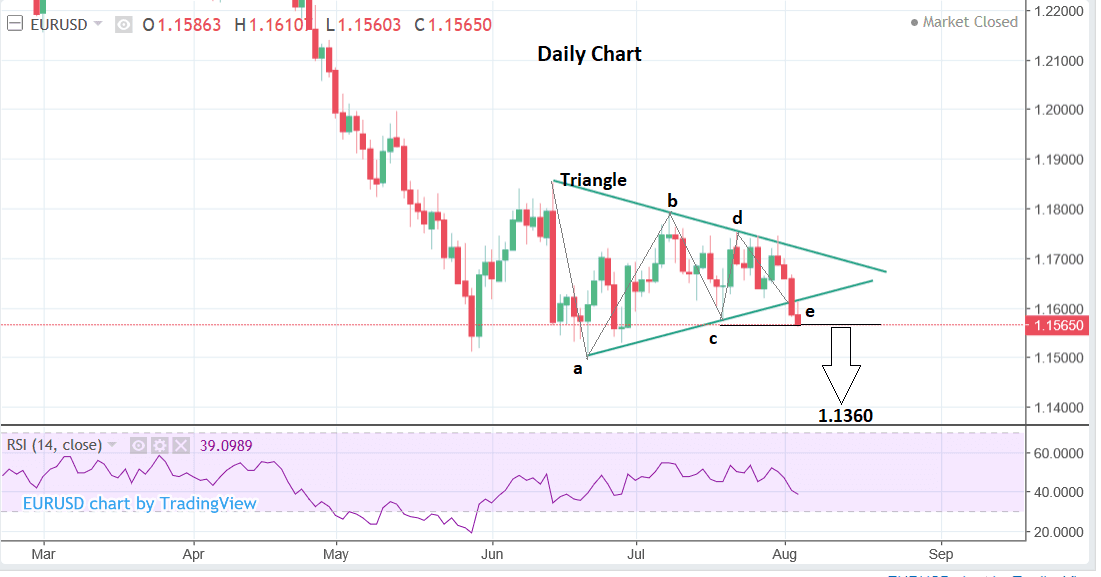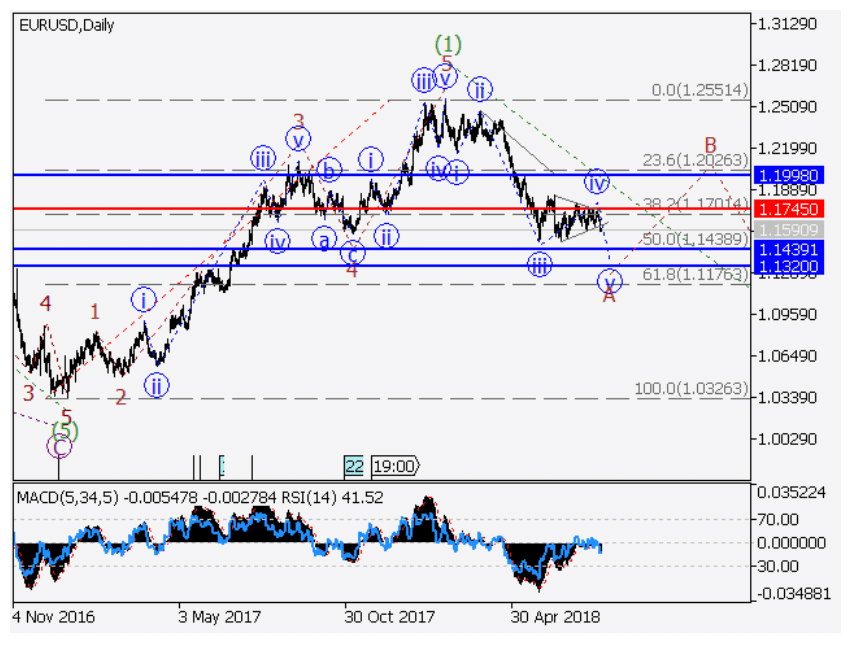The Euro-to-Dollar Rate 5-Day Forecast: Rangebound State May be at an End

Image © Pound Sterling Live
- EUR/USD is breaking out from the narrow confines of a sideways range
- The pair could now fall to a deeper target in the 1.13s or 1.14s
- Main data release for the Euro is the ECB's Economic Bulletin; for the Dollar inflation data will take centre stage
After many ups and downs within the narrow confines of its recent range the Euro-to-US Dollar rate looks to be finally breaking out to the downside, and entering new territory in the week ahead.
EUR/USD had been tapering in two converging lines since basing at the 1.1510 lows in June; a tranche of activity which looks very much like a triangle pattern; a development which forewarns of steep volatility on the horizon.
Last week the pair made tentative signs of breaking out after falling to 1.1560, which is below the 1.1575 C-wave lows which we said would need to be broken for confirmation of a bearish breakout. Technically this means the pair will probably extend lower to its target at 1.1360.
An Elliot wave analysis of the pair also supports the probability of a break lower.
Such an analysis sees the pair consolidating in a wave (iv) triangle pattern, within a larger 5-wave structure down which began at the December 2017 highs.
The key line in the sand is the 1.1589 level, which if broken would signal the next wave of selling (wave (v)) with a downside target of 1.1439 initially and 1.1320 later, says Alex Geuta at broker Liteforex.
Elliot waves are cycles of buying and selling, of rising and falling prices, which are composed of 5 smaller waves numbered 1-5, or labeled using Roman numerals, as in I, II, III, IV, and V.
Waves 1,3 and 5 move in the direction of the dominant trend whilst 2 and 4 represent corrections. Wave 3 is almost always the longest and the strongest wave.
After a 5-wave pattern has finished the market corrects back in a shallower counter-trend move labeled A,B, and C.
Elliot wave analysts try to establish the point at which the current market is in the greater wave pattern, which enables them to predict what will happen next.
Advertisement
Get up to 5% more foreign exchange for international payments by using a specialist provider to get closer to the real market rate and avoid the gaping spreads charged by your bank when providing currency. Learn more here
What to Watch for the US Dollar this Week
The main release for the US Dollar in the week ahead is July inflation, which is forecast to rise 0.2% compared to the previous month, both on a headline and a core basis, when it is released a 13.30 B.S.T on Friday, August 10.
Headline CPI is also expected to show a 3.0% rise on a year-on-year (yoy) basis - that is, compared to July 2017, whilst Core is supposed to show a 2.3% increase.
A higher-than-expected increase in inflation is likely to support the Dollar as it will increase the probabilities of a more aggressive rate hiking agenda from the Federal Reserve (Fed); and higher interest rates drive up currencies by attracting greater inflows of foreign capital drawn by the promise of higher returns.
Other significant data out for the Dollar in the week ahead includes PPI or factory gate prices out at 13.30 on Thursday and Jobless claims at the same time.
The 'Redbook' retail sales gauge is out at 13.55 on Tuesday, and Consumer Credit for June is out at 20.00, and is forecast to show a rise of 16bn, from 24.56bn previously.
There is also a lot of oil data with API crude oil stock at 21.30 on Tuesday and the Baker Hughes rig count on Friday at 18.00.
What to Watch for the Euro
The main release in the week ahead for the Euro is the European Central Bank's Economic Bulletin out on Thursday, August 09 at 9.00 B.S.T.
This will present the latest assessment of the Eurozone economy by the European Central Bank (ECB) and will therefore be closely watched by analysts and traders.
Economic indicators in the region have given conflicting signals, with PMI's showing robustness but GDP growth disappointment - the bulletin may shed light on these discrepancies and provide insight into the ECB's views of the economy's trajectory in H2.
If its positive it could boost the single currency.
The other main release for the Euro-area is the Retail PMI for July, out at 8.10 on Monday morning. The stat showed a 51.8 result in June.
Advertisement
Get up to 5% more foreign exchange for international payments by using a specialist provider to get closer to the real market rate and avoid the gaping spreads charged by your bank when providing currency. Learn more here






